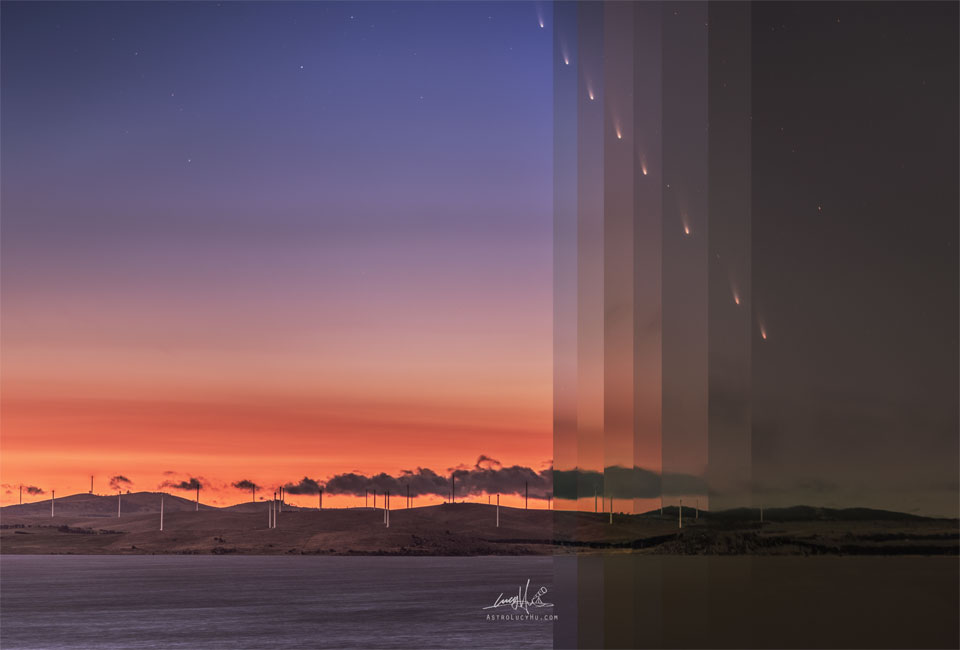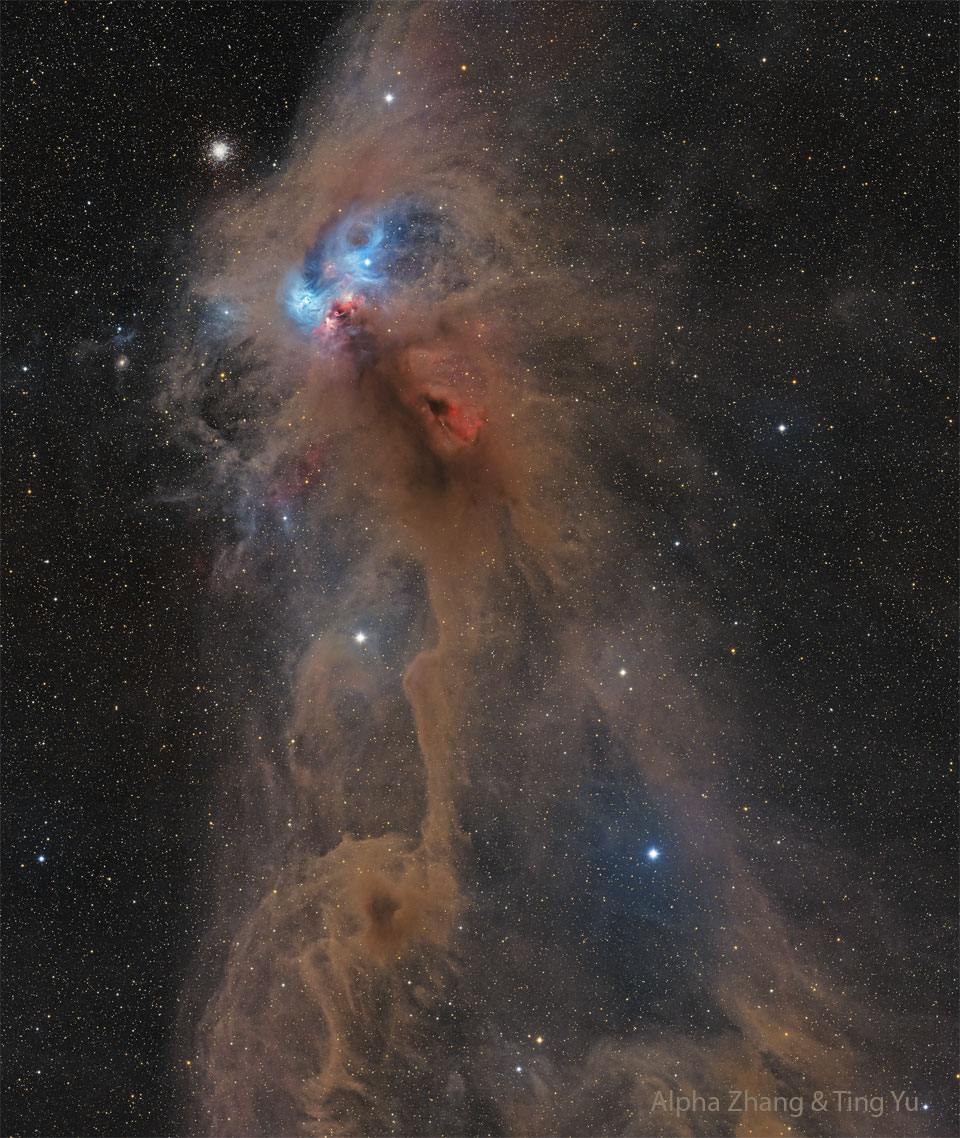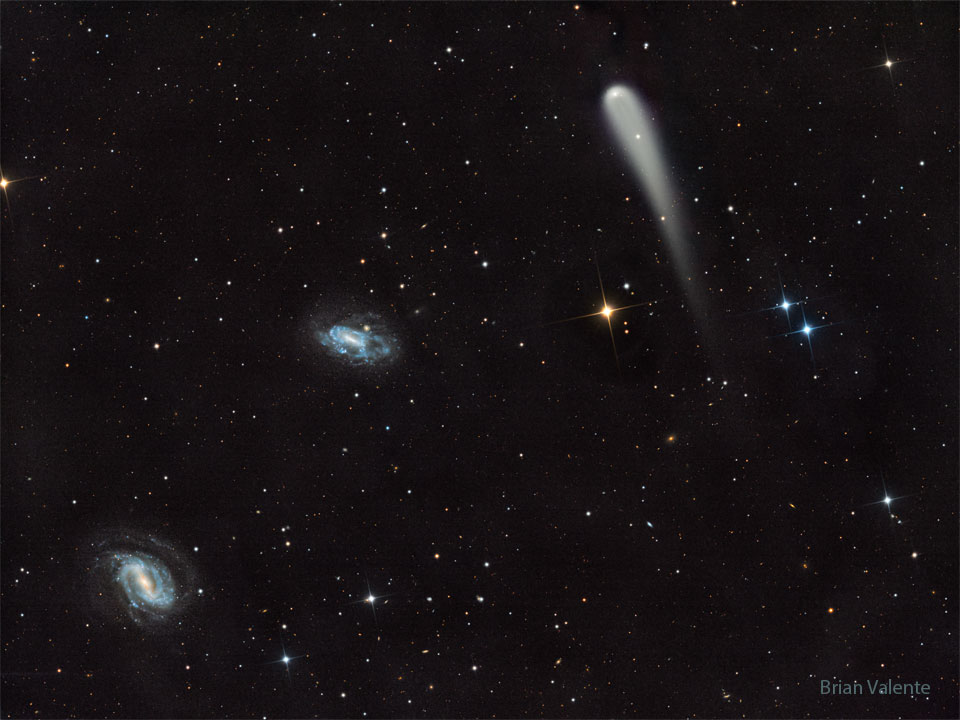Nombre total de pages vues
26/09/2024
PLANTES FASCINANTES - Fleur de la Passion. La fleur dans la démesure : des étamines et un pistil énormes
ASTRONOMY - The Great Globular Cluster in Hercules
2024 September 26
Image Credit & Copyright: Jan Beckmann, Julian Zoller, Lukas Eisert, Wolfgang Hummel
Explanation: In 1716, English astronomer Edmond Halley noted, "This is but a little Patch, but it shows itself to the naked Eye, when the Sky is serene and the Moon absent." Of course, M13 is now less modestly recognized as the Great Globular Cluster in Hercules, one of the brightest globular star clusters in the northern sky. Sharp telescopic views like this one reveal the spectacular cluster's hundreds of thousands of stars. At a distance of 25,000 light-years, the cluster stars crowd into a region 150 light-years in diameter. Approaching the cluster core, upwards of 100 stars could be contained in a cube just 3 light-years on a side. For comparison, the closest star to the Sun is over 4 light-years away. The deep, wide-field image also reveals distant background galaxies including NGC 6207 at the upper left, and faint, foreground Milky Way dust clouds known to some as integrated flux nebulae.
25/09/2024
SANTé/MEDECINE - ALIMENTATION - NUTRIMENTS - Les antioxydants : les protecteurs contre le stress cellulaire
POISSONS EXOTIQUES - Le chirurgien à voile indien
ASTRONOMY - Comet A3 Through an Australian Sunrise
2024 September 25
Image Credit & Copyright: Lucy Yunxi Hu
Explanation: Comet Tsuchinshan-ATLAS is now visible in the early morning sky. Diving into the inner Solar System at an odd angle, this large dirty iceberg will pass its closest to the Sun -- between the orbits of Mercury and Venus -- in just two days. Long camera exposures are now capturing C/2023 A3 (Tsuchinshan–ATLAS), sometimes abbreviated as just A3, and its dust tail before and during sunrise. The featured image composite was taken four days ago and captured the comet as it rose above Lake George, NSW, Australia. Vertical bands further left are images of the comet as the rising Sun made the predawn sky increasingly bright and colorful. Just how bright the comet will become over the next month is currently unknown as it involves how much gas and dust the comet's nucleus will expel. Optimistic skywatchers are hoping for a great show where Tsuchinshan–ATLAS creates dust and ion tails visible across Earth's sky and becomes known as the Great Comet of 2024.
24/09/2024
LES NUAGES DIEUX DU CIEL- Nuage lenticulaire au-dessus du lac Laguna Verde en Bolivie
ASTRONOMY - NGC 6727: The Rampaging Baboon Nebula
2024 September 24
Image Credit & Copyright: Alpha Zhang & Ting Yu
Explanation: This dusty region is forming stars. Part of a sprawling molecular cloud complex that resembles, to some, a rampaging baboon, the region is a relatively close by 500 light-years away toward the constellation Corona Australis. That's about one third the distance of the more famous stellar nursery known as the Orion Nebula. Mixed with bright nebulosities, the brown dust clouds effectively block light from more distant background stars in the Milky Way and obscure from view embedded stars still in the process of formation. The eyes of the dust creature in the featured image are actually blue reflection nebulas cataloged as NGC 6726, 6727, 6729, and IC 4812, while the red mouth glows with light emitted by hydrogen gas. Just to the upper left of the baboon's head is NGC 6723, a whole globular cluster of stars nearly 30,000 light years in the distance.
23/09/2024
SANTé/MEDECINE - ALIMENTATION - NUTRIMENTS - Les glucides : premières réserves énergétiques du corps
LES NUAGES - DIEUX DU CIEL - Somptueux nuage rouge dans le ciel (cumulus)
ASTRONOMY - Comet Tsuchinshan-ATLAS Approaches
2024 September 23
Image Credit & Copyright: Brian Valente & Greg Stein
Explanation: What will happen as this already bright comet approaches? Optimistic predictions have Comet C/2023 A3 (Tsuchinshan–ATLAS) briefly becoming easily visible to the unaided eye -- although the future brightness of comets are notoriously hard to predict, and this comet may even break up in warming sunlight. What is certain is that the comet is now unexpectedly bright and is on track to pass its closest to the Sun (0.39 AU) later this week and closest to the Earth (0.47 AU) early next month. The featured image was taken in late May as Comet Tsuchinshan–ATLAS, discovered only last year, passed nearly in front of two distant galaxies. The comet can now be found with binoculars in the early morning sky rising just before the Sun, while over the next few weeks it will brighten as it moves to the early evening sky.
ASTRONOMY - A Beautiful Trifid
2025 July 9 A Beautiful Trifid Image Credit & Copyright : Alessandro Cipolat Bares Explanation: The beautiful Trifid Nebula is a co...

-
2022 September 26 All the Water on Planet Earth Illustration Credit: Jack Cook, Adam Nieman, Woods Hole Oceanographic Institution ; Data ...
-
2024 September 7 Small Moon Deimos Image Credit: HiRISE , MRO , LPL (U. Arizona) , NASA Explanation: Mars has two tiny moons, Phobos a...









